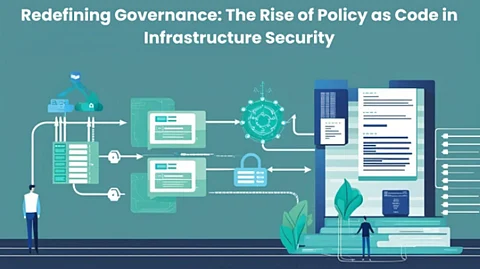

In an era of rapidly evolving cloud infrastructure, the need for automated, scalable governance has never been greater. Sarathe Krisshnan Jutoo Vijayaraghavan, a forward-thinking technologist, explores the shift toward codified governance in modern infrastructure management. In this article, he delves into how Policy as Code is redefining the boundaries between security, compliance, and agility in digital ecosystems.
The manual, documentation-heavy, and retroactive model of a policy enforcement manual is quickly going out of fashion. The velocity of the development cycle is increasing through DevOps practices and cloud native technologies, and security and compliance have to keep pace. Policy as Code (PaC) is the innovative paradigm that can position governance as problem in infrastructure development rather than a constraint.
PaC captures the principle of codifying policy into machine readable representation, in formats such as JSON, YAML, or domain languages like Rego, thus converting policy rules, which are often only abstract constructs, into code components that can be enforced, tested, and audited. Policies can be included into the software development lifecycle by companies so ensuring that the delivery process significantly includes governance.
At the core of PaC lies the concept of declarative policy definition. These definitions stress on the desired state rather than on how to enforce compliance, so guiding rather than defining. This approach removes logical deficiencies, prevents them, and enables scalability.
PaC also makes advantage of best practices in software engineering including peer review and version control. Policies deposited into Git repositories become traceable; if a policy is changed, it must be routed through a review pipeline, much as with a code application. This activity adds transparency, especially in industries subject to control.
From an architectural perspective, PaC takes the form of a modular architecture. This architecture separates concerns around defining policies, evaluating them, and enforcing them, it abstracts the implementation of the policies and follows consistent design principles of scalable systems. Policy as Code allows security specialists to define a rich rule set while DevOps engineers simply build the policy checks into their CI/CD processes. This kind of ability brings several purposes in one place.
A defining strength of PaC is how easily it can integrate into Continuous Integration/Continuous Deployment (CI/CD) systems. This allows for security to be introduced into development pipelines sooner and fits into the "shift left" philosophy.
Multiple layers of enforcement are implemented across CI/CD pipelines:
Pre-commit hooks provide immediate feedback to developers.
Pull request validations enforce peer-reviewed changes.
Build-time checks inspect container images and artifacts.
Deployment gates validate configurations before production release.
These layers early on surface issues, so we'll have sped up development and security. The feedback systems confirm developers are aware and empowered not blocked.
Implementing PaC depends on selecting the right tools and architecture. Open Policy Agent (OPA) leads in adoption due to its flexibility. Its Rego language empowers security teams to encode complex logic without scripting intricacies.
Other tools such as HashiCorp Sentinel cater to specific ecosystems. Meanwhile, native cloud solutions offer pre-built policy templates, ideal for streamlined use in single-platform environments.
Some organizations build custom engines for unique needs. Regardless of the tool, architectural best practices call for separation between policy storage, evaluation engines, and enforcement hooks. This design ensures resilience and adaptability across environments.
While the benefits of PaC are considerable, implementation is not without its challenges. Key hurdles include:
Policy language complexity, requiring new skill sets.
Testing intricacies, especially across varied environments.
Organizational misalignment, where team silos impede adoption.
Maintenance at scale, as policies multiply.
Leading practices mitigate these issues. Cross-functional governance teams foster collaboration. Reusable policy libraries reduce duplication and onboarding time. Graduated enforcement models where policies warn before blocking ease adoption.
Exception handling workflows and policy lifecycle tools further reduce operational friction, enabling proactive management at scale.
As PaC matures, integration with artificial intelligence and machine learning is on the horizon. Future policy engines may analyze historical data and runtime telemetry to make adaptive, context-aware decisions. This evolution would enable governance that responds dynamically to changes in behavior or threats.
Policy as Code is poised not only to maintain pace with infrastructure innovation but to lead it, transforming governance into a competitive advantage rather than a constraint. It empowers teams to automate trust, embed compliance into workflows, and respond swiftly to evolving regulatory demands.By turning policies into dynamic assets, organizations can foster agility without compromising oversight.
In conclusion, By reconceptualizing policy as an executable asset, Policy as Code redefines how organizations approach security and compliance in dynamic environments. Through integration with workflows and modular architecture, PaC enables organizations to scale with resilience. As Sarathe Krisshnan Jutoo Vijayaraghavan notes, this marks the dawn of a governance model that empowers, rather than restricts, innovation.
